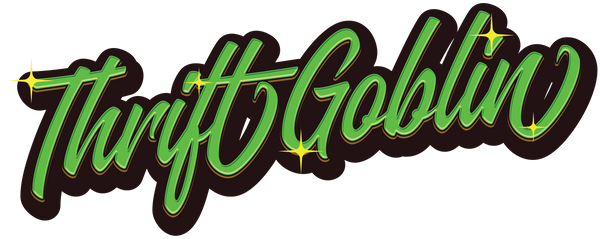LEGO
1. Origins and Creation
The Beginning of LEGO:
- Founding: LEGO was founded in 1932 by Ole Kirk Christiansen in Billund, Denmark. Originally, the company produced wooden toys, but in 1949, it began manufacturing the interlocking plastic bricks that would become its hallmark.
- Name Origin: The name "LEGO" is derived from the Danish phrase "leg godt," which means "play well." This simple philosophy of encouraging creativity and play has guided the company from the start.
The Brick That Changed Everything:
- Development of the LEGO Brick: In 1958, LEGO introduced the iconic brick with the unique interlocking stud-and-tube design, allowing for more stable and versatile building structures. This innovation set LEGO apart from other toys and became the foundation of its success.
- Patent and Global Expansion: The brick design was patented, and by the 1960s, LEGO had expanded beyond Denmark, setting up production facilities and sales offices around the world, establishing its presence as a global brand.
2. Key Milestones
LEGO Sets and Themes:
- Introduction of Themed Sets: In the 1970s, LEGO began producing themed sets, including town, space, and castle themes. These sets added narrative possibilities and allowed for more imaginative play.
- LEGO Minifigures: In 1978, LEGO introduced the minifigure, a small, articulated character that quickly became a beloved part of the LEGO experience. Minifigures added a new dimension to LEGO sets, allowing builders to create stories and bring their creations to life.
Innovation and Diversification:
- LEGO Technic: In 1977, LEGO launched the Technic line, featuring more complex models with gears, axles, and motors, catering to older children and adults interested in engineering and mechanics.
- LEGO Mindstorms: In 1998, LEGO revolutionized the educational toy market with the introduction of LEGO Mindstorms, a line that combined LEGO bricks with robotics, enabling users to build and program their own robots.
Financial Challenges and Revival:
- Early 2000s Crisis: In the early 2000s, LEGO faced financial difficulties due to overexpansion and competition from digital entertainment. The company underwent a major restructuring, refocusing on its core products and values.
- The LEGO Movie and Resurgence: The release of "The LEGO Movie" in 2014 marked a turning point, revitalizing the brand and leading to a resurgence in popularity. The movie's success was followed by a series of films, video games, and new product lines that kept LEGO at the forefront of the toy industry.
3. Iconic Products and Innovations
LEGO Sets:
- Classic Sets: Sets like the LEGO City, Space, and Castle themes have been staples for generations, offering endless possibilities for imaginative play.
- Licensed Themes: LEGO has successfully partnered with major franchises, including Star Wars, Harry Potter, Marvel, and Disney, creating themed sets that appeal to fans of all ages.
- Architecture and Ideas: LEGO Architecture and LEGO Ideas lines allow fans to build intricate models of famous landmarks and fan-designed projects, blending creativity with education.
LEGO Minifigures:
- Cultural Icons: LEGO Minifigures have become cultural icons, with their simple design allowing for endless customization. They represent various characters, from everyday people to superheroes and movie characters, making them a key element of LEGO's appeal.
- Collectibility: Minifigures are highly collectible, with special editions and themed series being particularly sought after by fans and collectors.
Technological Innovations:
- LEGO Technic: LEGO Technic introduced advanced building techniques, incorporating gears, axles, and motors to create functioning models that mimic real-world machines. This line continues to challenge and inspire builders with its complexity.
- LEGO Mindstorms: The Mindstorms line combines LEGO building with robotics, allowing users to create programmable robots. It has been widely used in educational settings and by hobbyists interested in robotics and programming.
4. Fun Facts and Cultural Impact
Global Reach:
- LEGO Stores and Legoland: LEGO has opened numerous LEGO-branded retail stores worldwide and established LEGOLAND theme parks in several countries, creating immersive experiences for fans.
- Educational Influence: LEGO bricks are used in educational settings to teach concepts ranging from simple construction to advanced robotics and engineering, demonstrating their versatility and appeal across age groups.
Sustainability Efforts:
- Eco-Friendly Initiatives: LEGO has committed to producing sustainable products, including the introduction of bricks made from plant-based plastics. The company aims to reduce its environmental impact while continuing to inspire creativity in future generations.
- Recycling and Reuse: LEGO encourages the recycling and reuse of bricks through programs that donate used LEGO sets to children in need, ensuring that the joy of building reaches as many people as possible.
Pop Culture Phenomenon:
- The LEGO Movie: "The LEGO Movie" was a critical and commercial success, bringing LEGO's creative spirit to the big screen and introducing the brand to a new generation. Its success led to sequels, spin-offs, and an expanded media presence.
- LEGO in Media: LEGO's influence extends beyond toys, with numerous video games, television series, and books celebrating the brand's creativity and innovation. The company has also become a beloved partner in major franchise collaborations, cementing its place in pop culture.
Memorable Quotes:
- "Everything is Awesome!" - The catchy theme song from "The LEGO Movie," symbolizing the joyful and inclusive spirit of LEGO.
- "Only the best is good enough." - A motto coined by LEGO's founder Ole Kirk Christiansen, reflecting the company’s commitment to quality and innovation.

